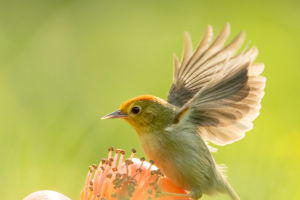Nature's Quiet Beauty
Hello, Lykkers! Today, we journey into the peaceful world of one of nature’s most graceful creatures — the roe deer.
These enchanting animals, known for their elegant stature and quiet presence, are a symbol of serenity in the wild.
Whether glimpsed in a forest clearing or bounding through the underbrush, roe deer captivate the imagination with their gentle nature and impressive agility.
A Quick Introduction to the Roe Deer
Roe deer are small, delicate herbivores native to many parts of Europe and Asia. Their sleek, reddish-brown coats in the summer turn to a thicker, greyish color in winter, helping them blend effortlessly into their surroundings. They have a distinctive white rump patch and short antlers on males, which they shed annually. Unlike other deer species, roe deer are known for their solitary behavior, often spotted alone or in small family groups rather than large herds.
Natural Habitat: Forests and Beyond
The roe deer's preferred home is the forest, but these adaptable creatures can be found in a range of environments, from dense woodlands to open meadows and even suburban areas. Roe deer are masters of camouflage, moving silently through the trees, making them a rare sight despite their wide range. In the early mornings or at dusk, these shy animals are more likely to be seen grazing, always alert and ready to disappear at the slightest hint of danger.
Speed and Agility: A True Forest Athlete
One of the roe deer's most impressive traits is its speed and agility. Their powerful hind legs allow them to leap gracefully and move swiftly through dense vegetation. This agility is not just for show — it's a crucial survival skill. When threatened, the roe deer can spring into action, darting quickly through the forest with incredible grace, easily navigating obstacles in their path.
Their ability to move so fluidly in challenging terrains is part of what makes them such fascinating creatures to observe. Even their delicate hooves are perfectly suited to their environment, providing balance and precision as they navigate the forest floor.
A Quiet Life: Feeding and Behavior
Roe deer are primarily browsers, feeding on leaves, herbs, and fruits, with a particular fondness for tender shoots and young plants. Their diet shifts with the seasons, allowing them to thrive in a variety of conditions. During the warmer months, they graze in open fields and forest clearings, but as winter approaches, they move deeper into the woods, where the dense cover protects them from the cold and predators.
These animals are also known for their secretive behavior. Unlike larger deer species that form herds, roe deer tend to keep to themselves, particularly outside of the breeding season. This solitary nature only adds to their mystique, as they often appear like phantoms in the wilderness — seen one moment, gone the next.
The Importance of Conservation
While the roe deer population is currently stable, their habitats are under constant threat from urban expansion and deforestation. Protecting these beautiful creatures requires preserving the forests and natural environments they depend on for survival. Conservation efforts across Europe and Asia are working to maintain these habitats and ensure that roe deer can continue to thrive in the wild.
Lykkers, the roe deer represents a beautiful balance between strength and elegance, thriving quietly in the shadows of nature. Their grace, agility, and adaptability are a reminder of the wonders of wildlife that exist all around us, often unseen. Next time you find yourself in a forested area, keep an eye out — you might just catch a glimpse of this elusive, graceful creature bounding through the trees.
Have you ever been lucky enough to spot a roe deer in the wild?


